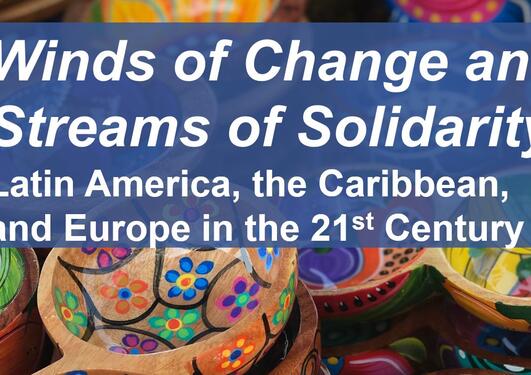Q&A: Lise Øvreås
Marine microbiologist Lise Øvreås loves the Atacama Desert in Chile for its unique biological and geological features, enjoys getting into the groove with Stan Getz and Astrud Gilberto, and was introduced to the wonders of magic realism when reading Isabelle Allende’s The House of the Spirits.

Main content
- In this weekly series we interview the members of the programme committee for the conference “Winds of Change and Streams of Solidarity: Latin America, the Caribbean, and Europe in the 21st Century”. This is the fifth and final interview in the series.
- Why should Norwegians/Europeans care about what’s going on in Latin America and the Caribbean?
“We are experiencing the two most dramatic crises int the world, the climate change, and the loss of biodiversity. Both these crises need a joint global effort to be solved and therefore we need to work globally. The Arctic is facing the most rapid climate change and there is a saying that “What happens in the Arctic does not stay in the Arctic” meaning that climate change in the Arctic will have global consequences and cannot be ignored.”
- What can students learn from visiting Latin America or the Caribbean?
“One important issue is the obvious cultural and historical difference between Norway and Latin America and the Caribbean. As a natural scientist, it is also quite fascinating to learn about the different biotopes and biodiversity seen in this area, that is very different from Europe and specifically Norway. Latin America and the Caribbean are defined as biodiversity hot spots due to the high level of biological diversity, and the Amazon rain forest in act as a key climate regulator so important to understand the global mechanisms for climate change.”
- What is your favourite place in Latin America and the Caribbean, and why?
“Of the places I have visited I would say the Atacama Desert in Chile. This place is such a beautiful place with unique biological and geological features. It used to be recognised as a lifeless environment but is today known as a highly diverse ecosystem with several novel microbial microorganisms. Situated at around 4,300 metres above sea level and its extreme solar radiation it favours organisms adapted to extreme life conditions. Here we find solar salt evaporation ponds in addition to hot springs which are geothermal produced by the emergence of geothermally heated groundwater onto the surface of Earth. Hot spring water often contains large amounts of dissolved minerals. The minerals brought to the surface in hot springs often feed communities of extremophiles and microorganisms adapted to extreme conditions.”
- If you should recommend one book from/on Latin America and the Caribbean, which would that be?
“Like many other young people in the early 80s, I was fascinated by Isabel Allende, one of the most popular Latin American writers in Norway. In 1982 I read The House of the Spirits, which was my first encounter with magical realism. That was a powerful book and had strong influence on me. I really liked that book.”
- And if you should recommend one film or movie from/on Latin America and the Caribbean, and why?
“I have always been fascinated by the story of Eva Peron. As a little girl I had a double album with the musical Evita, which is about Eva Perón and her life. Evita Duarte married the Argentine president and dictator Juan Perón, becoming the most loved and hated woman in Argentina. Eva Perón was very important to the political development in Argentina. In 1996, the film Evita came out with Madonna in the lead role. Of course, I was very excited about the impression this movie would make on me, and I must say it lived up to my expectations. Madonna does a great job in the role of Eva Peron and the music is of course as wonderful as before.”
- Who is your favourite music artist from Latin America or the Caribbean?
“Then we must first visit Brazil. I am particularly fond of jazz, and I really like the music of Stan Getz and Astrud Gilberto, which led to Stan Getz becoming world-famous far beyond the borders of jazz. I also like the Argentinian tango composer Astor Piazzolla. In particular, I like the Norwegian musician Per Arne Glorvigen's interpretations of Astor Piazzolla's tangos. These are spectacular and boosting with energy.”
- What is the one thing that Norwegians could learn from Latin Americans and Caribbeans?
“Be more spontaneous and become better dancers.”


